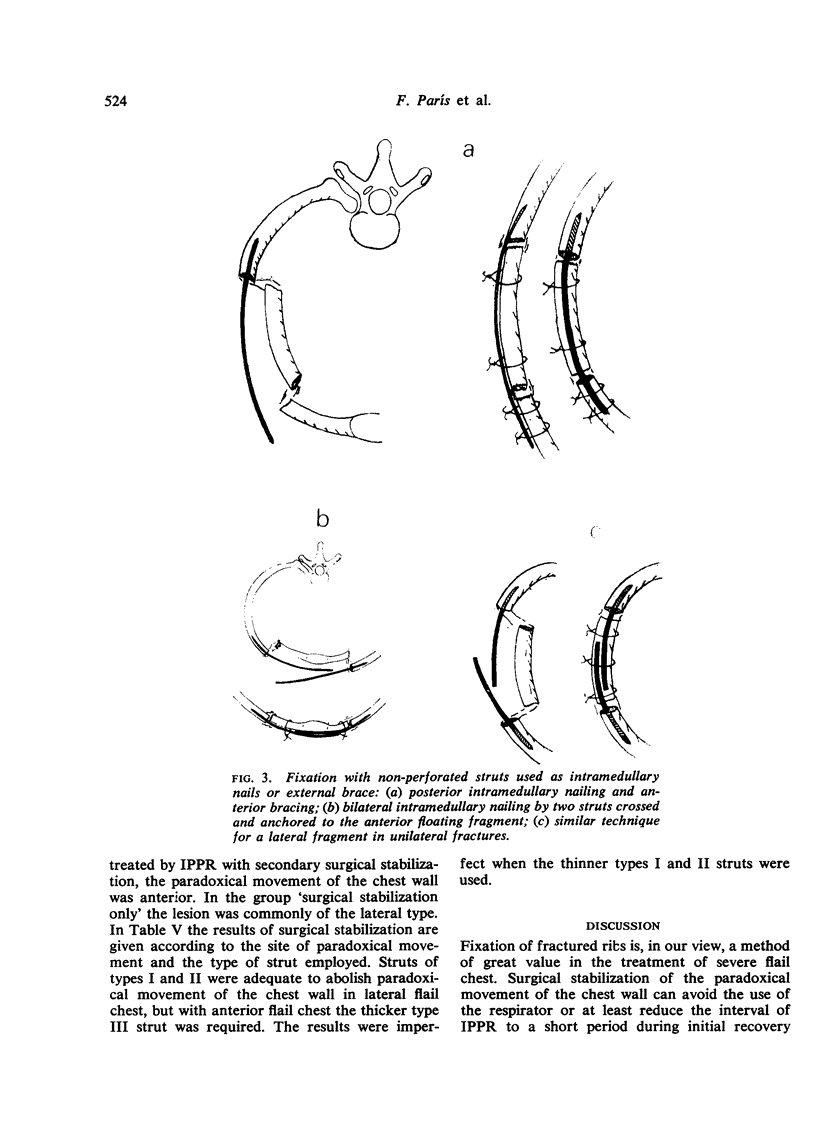Abstract
Since 1970 we have stabilized the ribs to correct paradoxical movement of the chest wall in chest injuries, using an original technique, in order to avoid as far as possible the need for long-term chest wall stabilization by intermittent positive pressure respiration (IPPR). The technical details of surgical stabilization are described, and the different types of stainless steel struts are shown. Type I was originally used either as an intramedullary nail or as an external brace. Types II and III were designed for external fixation of the strut to the rib. Treatment of 29 patients with severe flail chest, classified into four groups is shown: group I was treated by IPPR, group II by IPPR plus surgical stabilization, group III by surgical stabilization only, and group IV by surgical stabilization after exploratory thoracotomy. The clinical results are discussed. We conclude that surgical stabilization of the paradoxial movement of the chest wall can avoid the use of the respirator or at least reduce the interval of IPPR to a short period during the initial recovery from trauma. Using type III struts, we have obtained stabilization of the flail chest in all cases even in patients with severe anterior paradoxical movement. The patients' tolerance of surgical stainless steel struts was good.
Full text
PDF






Images in this article
Selected References
These references are in PubMed. This may not be the complete list of references from this article.
- AVERY E. E., BENSON D. W., MORCH E. T. Critically crushed chests; a new method of treatment with continuous mechanical hyperventilation to produce alkalotic apnea and internal pneumatic stabilization. J Thorac Surg. 1956 Sep;32(3):291–311. [PubMed] [Google Scholar]






